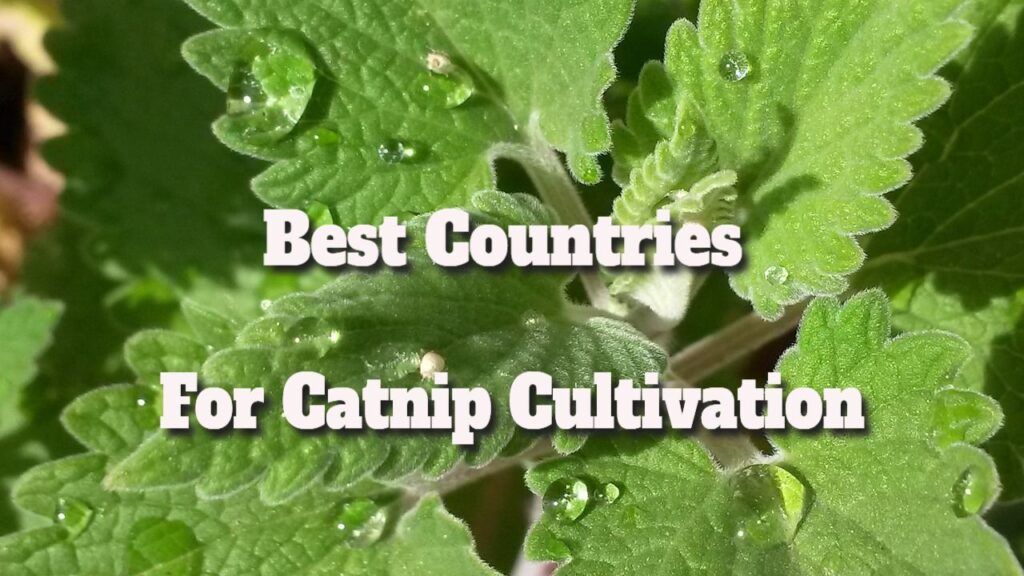Best Countries For Catnip Cultivation
Contents
Best Countries For Catnip Cultivation
Catnip, scientifically known as Nepeta cataria, is a perennial herbaceous plant from the mint family. Catnip is well-known for its potent effects on cats but has medicinal and culinary benefits. However, good catnip production depends on environmental factors such as climate, soil conditions, and sunshine exposure.
This detailed guide will look at the best countries for catnip production, highlighting places worldwide where optimal growing conditions promote robust plant growth and maximum yield. Each locale provides distinct benefits to catnip farmers, from the lush vistas of the Pacific Northwest in the United States to the sun-drenched plains of Provence, France.
We explore the many climates, agricultural practices, and issues catnip farmers encounter worldwide, gaining insights into sustainable farming methods and the growing global catnip industry. Whether you’re a seasoned farmer, an aspiring gardener, or just interested in the intriguing world of catnip, this guide contains helpful information and practical recommendations for adequate growth.
Catnip Cultivation in the Pacific Northwest
Because of its diverse environment, the United States has many places ideal for catnip growth. Oregon, Washington, and Vermont are well-known for their catnip production. The Pacific Northwest’s moderate environment, with mild winters and warm summers, is suitable for catnip growth. The rich, well-drained soil in this area promotes healthy plant development.
Catnip growing is also supported by states in the Midwest, including Illinois, Michigan, and Ohio. The fertile soils and moderate climate provide ideal growing conditions, while soil drainage is critical in places with heavy rainfall.
Catnip production is also concentrated in the Northeast, including New York, Pennsylvania, and Maine. The region’s cool summers and damp weather are ideal for catnip, but gardeners must protect plants from excessive moisture to avoid rot.
Catnip Growth in British Columbia, Canada
Catnip cultivation is possible on a large scale in Canada, particularly in temperate provinces. British Columbia on the west coast has a perfect climate, with warm winters and moderate rains. The Fraser Valley region is well-known for its catnip production.
The Great Lakes region of Ontario has excellent soil and a warm climate, making it perfect for growing catnip.. Similarly, Quebec’s agricultural regions benefit from favourable temperatures and ample rainfall, which promote good catnip cultivation.
Catnip Cultivation in the United Kingdom
Catnip growing conditions in the United Kingdom vary by region. The temperate climate, with warm winters and cool summers, is ideal for catnip growth. The South West, mainly Cornwall and Devon, provides well-drained soils and plenty of sunlight, which promotes healthy plant growth.
In the Southeast, counties like Kent benefit from a marine climate that reduces temperature extremes and provides stable moisture levels, making them excellent for catnip cultivation. Catnip production is also supported in the Midlands and East Anglia, which have excellent soils and a temperate temperature.
Exploring Catnip Production in France
France, recognised for its numerous agricultural regions, provides ideal circumstances for catnip growing in various locales. The Loire Valley is ideal for growing catnip with its moderate climate and good soil. The region’s limestone-rich soils help to produce the plant’s fragrant oils.
Catnip thrives in Provence’s warm Mediterranean climate, which features hot, dry summers and moderate winters. However, farmers must provide appropriate irrigation to avoid water stress during the dry season.
Catnip Farming in Germany
Germany offers ideal conditions for catnip growth, particularly in areas with mild summers and well-drained soils. Rhineland-Palatinate and Baden-Württemberg have ideal weather for growing catnip, with plenty of sunlight and moderate rainfall.
Netherlands
The Netherlands, renowned for its superior horticultural practices, provides ideal circumstances for catnip growing. The country’s moderate marine environment, which has mild winters and cool summers, provides optimal growth conditions. Growers benefit from well-drained soils and access to innovative greenhouse equipment for year-round production.
New Zealand
The moderate environment of New Zealand, especially on the North and South Islands, is ideal for catnip cultivation. Hawke’s Bay, Canterbury, and Marlborough provide ideal conditions, with temperate temperatures and moderate rainfall. Furthermore, the country’s excellent soils promote healthy plant development.
Australia
Certain sections of Australia, including Tasmania and parts of Victoria and New South Wales, provide ideal conditions for cultivating catnip. Catnip production thrives in temperate regions with pleasant winters and warm summers; however, farmers must guarantee appropriate irrigation, particularly in drought-prone locations: fertile soils and access to irrigation water help to ensure good catnip cultivation in these areas.




